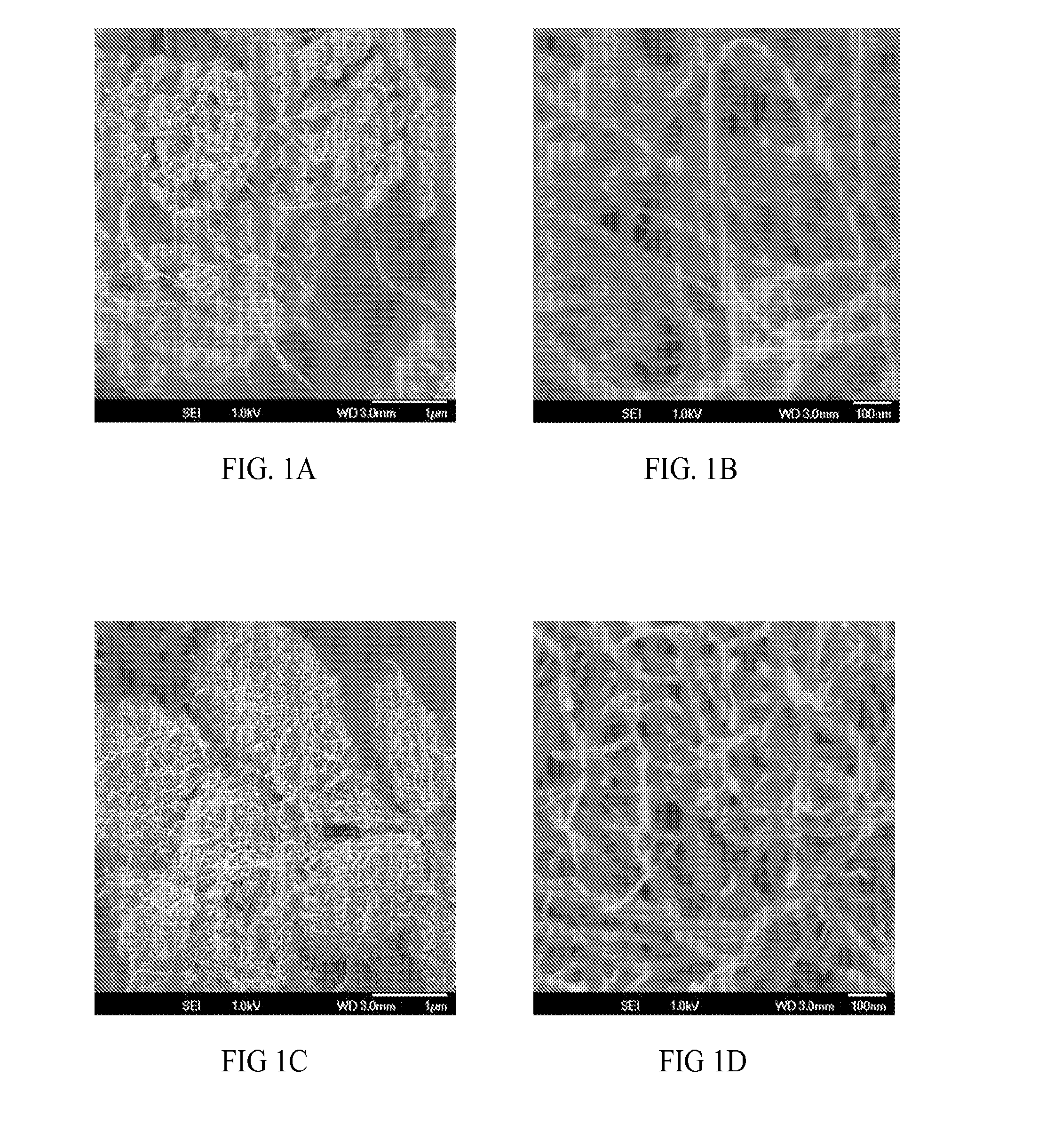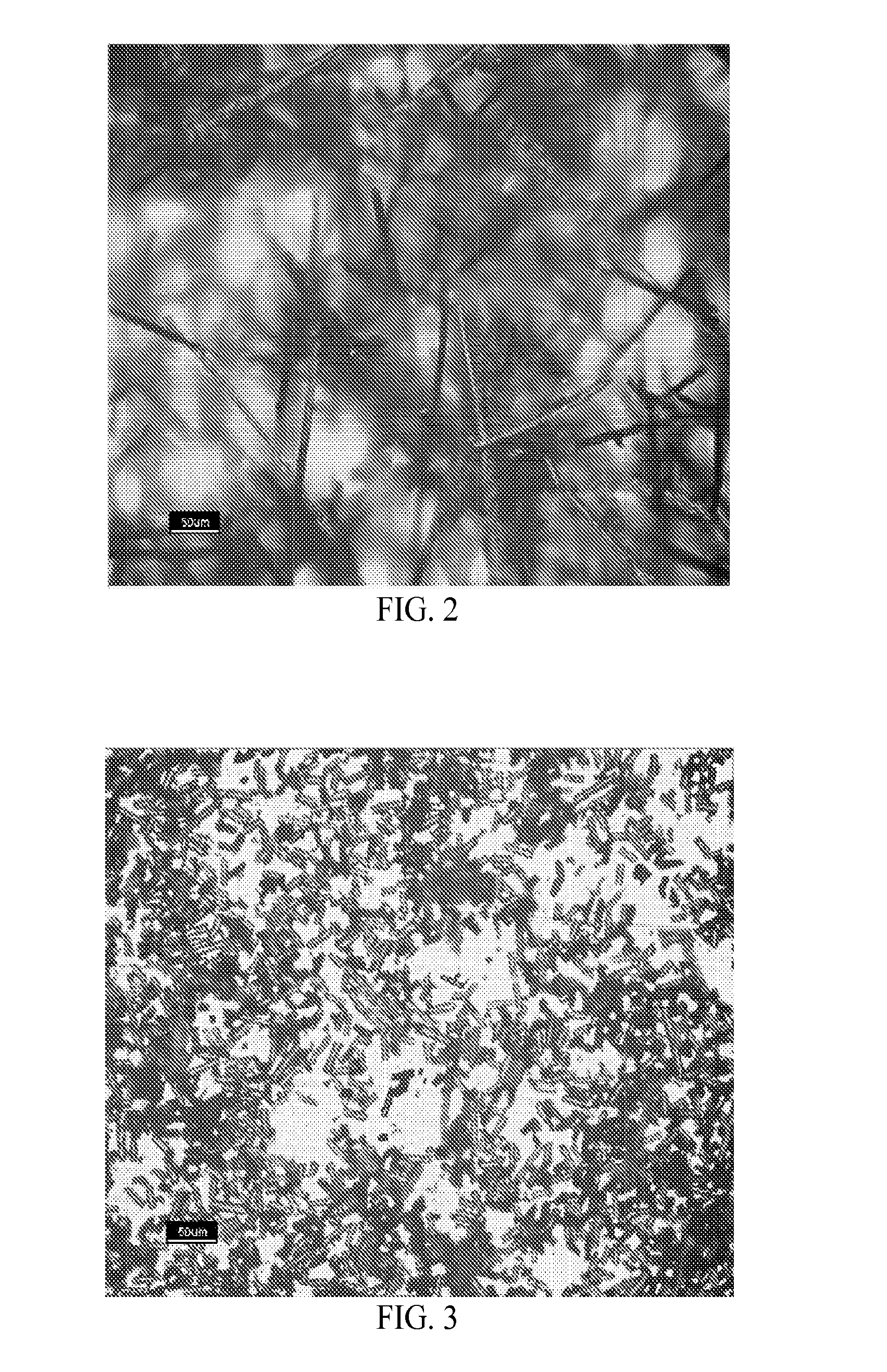Nanotube and finely milled carbon fiber polymer composite compositions and methods of making
a carbon fiber polymer and composite composition technology, applied in tubular articles, inorganic chemistry, domestic applications, etc., can solve the problems of nanotubes increasing the cost of the resulting product, nanotubes requiring special handling approaches, and nanotubes requiring high carbon loading levels, etc., to achieve the effect of reducing the loading of nanotubes
- Summary
- Abstract
- Description
- Claims
- Application Information
AI Technical Summary
Benefits of technology
Problems solved by technology
Method used
Image
Examples
example 1
[0117]Multi-walled carbon nanotubes (MWNTs) were used as received without modification or purification. The MWNTs exist mainly as individuals of different sizes. Carbon fibers having a diameter of about 7 microns and a length of about 150 microns with an aspect ratio greater than 20 from supplier were pulverized until the aspect ratio was greater than 1 and less than about 5. Feed rates of the MWNTs and finely milled carbon fibers were shear mixed with a thermoplastic PEEK, at about 355° C. in a co-rotating, intermeshing twin screw extruder (length 95 cm, L / D 38-42) to obtain concentrations of about 1.25 wt-% of MWNTs and 35 wt-% finely milled carbon fibers in PEEK. Compounding was carried out using multiple heating zones with barrel temperatures ranging from about 350° C. to about 370° C. Torque from about 260 to about 360 newton-meters was applied to the twin screw. The polymer, MWNTs and finely milled carbon fibers were mixed by the screw of the extruder. No additives or dispersi...
PUM
 Login to View More
Login to View More Abstract
Description
Claims
Application Information
 Login to View More
Login to View More - R&D
- Intellectual Property
- Life Sciences
- Materials
- Tech Scout
- Unparalleled Data Quality
- Higher Quality Content
- 60% Fewer Hallucinations
Browse by: Latest US Patents, China's latest patents, Technical Efficacy Thesaurus, Application Domain, Technology Topic, Popular Technical Reports.
© 2025 PatSnap. All rights reserved.Legal|Privacy policy|Modern Slavery Act Transparency Statement|Sitemap|About US| Contact US: help@patsnap.com



